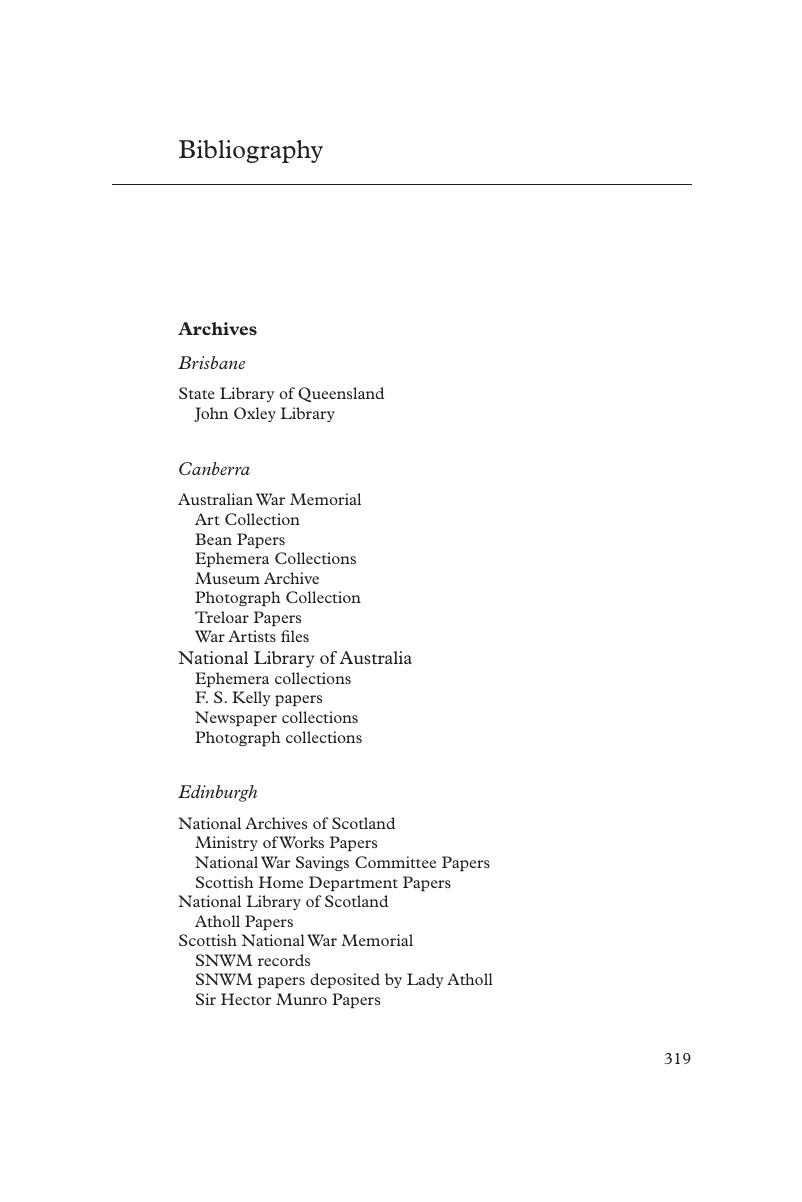Bibliography
Published online by Cambridge University Press: 29 September 2017
Summary

- Type
- Chapter
- Information
- Exhibiting WarThe Great War, Museums, and Memory in Britain, Canada, and Australia, pp. 312 - 318Publisher: Cambridge University PressPrint publication year: 2017



